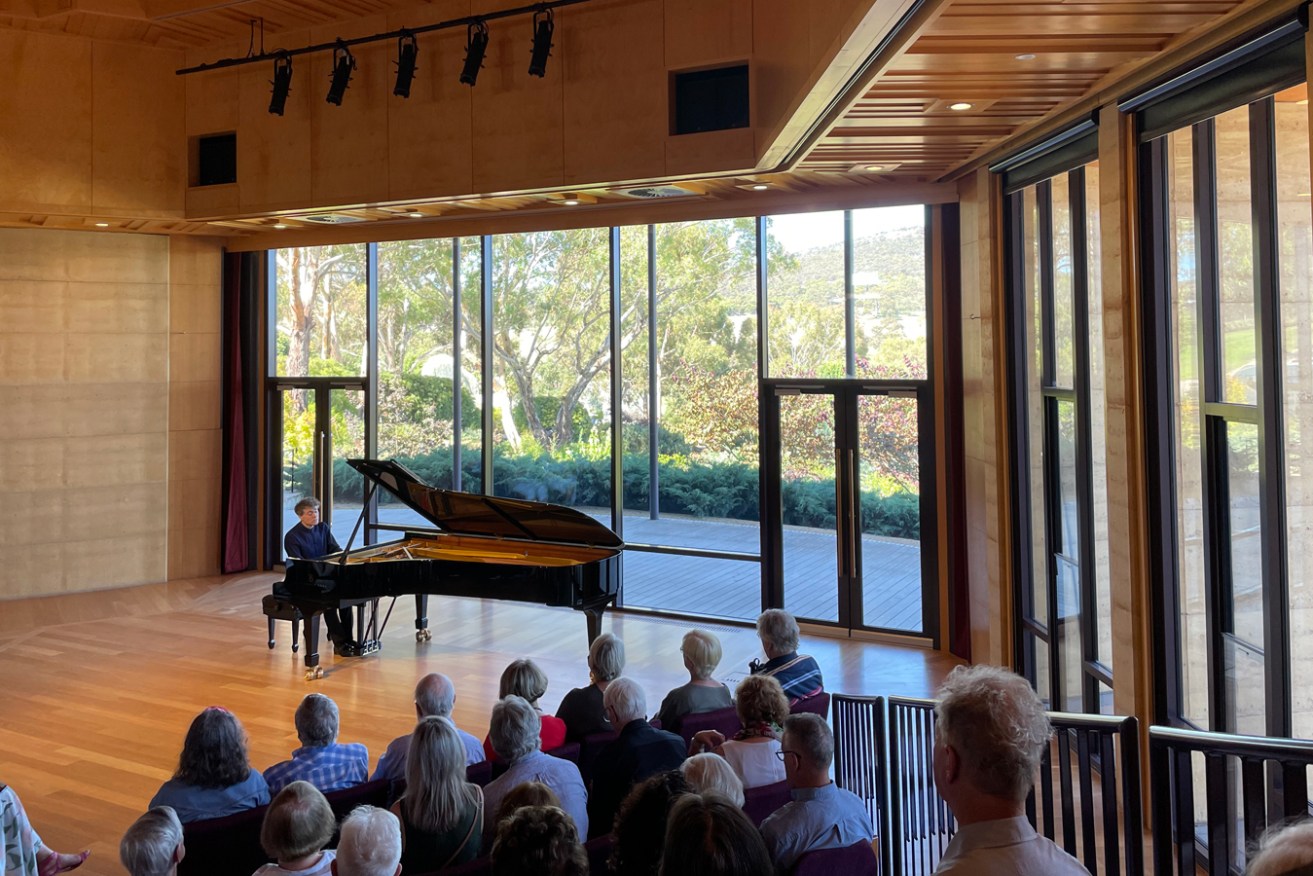Music review: Paul Lewis casts a spell with Schubert sonatas
Pianist Paul Lewis is perhaps the finest Schubertian of our era. His playing in part three of his journey through Schubert’s completed sonatas took the listener through all the realms of this most poetic music.


Paul Lewis performed part three in his Schubert cycle at UKARIA Cultural Centre on the weekend. Photo: supplied
A real belter of an Adelaide summer’s day reared its head for this year’s first big concert draw: UK pianist Paul Lewis playing part three of his Schubert sonata series at UKARIA. While the mercury nudged the old century outside, his playing inside the air-conditioned hall took listeners to another world.
Lewis’s Schubert, again, was infinitely beautiful. Exactly a year ago, he performed the first two parts of his cycle Schubert: The Completed Sonatas (find a review of the first concert here), and we might note here that several early sonatas with missing movements are not included – not naturally at home with sonata medium, the young Schubert seemed unable to finish them. Thus, the series presents 12 works, with all the later sonatas concentrated in the second pair of concerts. These are of course much-loved works, and keen interest centred on how Lewis would play them.
The earlier and middle sonatas do at times seem to chart ideas without quite knowing what the end result will be. Sonata No. 4 in A minor, D. 537, begins exuberantly but quickly ventures into unchartered, heart-searching directions. Structurally, Schubert follows Mozart or early Beethoven, but the 19-year-old’s spirit is restless and uncertain.
Lewis judged everything uncannily right. He accounted for the opening Allegro’s smart, bare outlines with a directness that perhaps did surprise one at first, before yielding tenderly into its entirely different pull of melody in the middle passages. One certainly senses that Lewis feels greatest kinship with hushed moods such as this movement presents. But he is also a most insightful musician who knows that the twin elements of resolute and poetic must co-exist for Schubert’s novel designs to properly work.
Alfred Brendel, Lewis’s great teacher, knew likewise and always brought Schubert’s classical foundations to the fore.
Transcendent things happen, as we know, when Schubert turns to pure song. In the second movement of Sonata No. 4, it is as if he just plonks in a melody and says that will do. One might immediately think it is an arrangement from one of his many beautiful Lieder, but no. For any other composer, this movement would be their crowning glory; for Schubert it is just another melodic invention.
Lewis played it exquisitely, with an exacting sense of how the vocal shape rises and falls. A natural melodist himself, he can occasionally be heard to hum along while he plays the piano. The hands, as it were, simply follow in chain, and the result feels very human and natural. Other pianists can be too pianistic with Schubert.
Sonata No. 9 in B, D. 575, is among the composer’s cheeriest sonatas. One could admire once again how Lewis refrained from straying into the drifty or dreamy. It is amazing how free musicians can be in their use of rubato in Schubert, but it comes at a cost of those classical underpinnings.
We step right into the profoundest outpourings with Sonata No. 18 in G, D. 894. As the pianist took a long pause before placing his hands on the keyboard, silence felt gratefully and rightfully the appropriate way to begin this special work. Immediately, one fell under the spell of its softly repeating chords thanks to Lewis’s delicate placement and touch. All the usual strictures of metrical time appeared to vanish, and the music floated: this is the magic Lewis creates.
Pure inspiration reigned in this performance. Tremendous climaxes occur in the first movement (at times reaching triple forte), and these can be achieved through a calculated, well-graded increase in strength over big stretches of bars. Even the finest interpretations can feel a bit pre-planned. But nothing felt calculated with Lewis. His affinity with Schubert is immediate and instinctive. It all welled from the heart.
He made the piano sing in the Andante, and the spirit dance in the last two movements. This really was the finest Schubert one could imagine: so fresh, so untrammelled, and so flawlessly executed. An additional thing about Lewis is how he very skilfully elides section with section, phrase with phrase: very often Schubert presents disjuncts of unexpected kinds (frequently of harmonic shift), but if these are elegantly joined instead of being left to stick out, the magical spell remains undisturbed.
There is one more instalment in this series to come, on February 10-11, with Deutsch numbers 958, 959 and 960. Try to nab a seat if you can: beg, borrow or steal. Otherwise, listen to Lewis in his recent recordings of the Schubert sonatas with Harmonia Mundi.
Part four of Paul Lewis’s Schubert: The Completed Sonatas will be performed on February 11 at UKARIA Cultural Centre (details here).
This article is republished from InReview under a Creative Commons licence. Read the original article.
InReview is an open access, non-profit arts and culture journalism project. Readers can support our work with a donation. Subscribe to InReview’s free weekly newsletter here.




